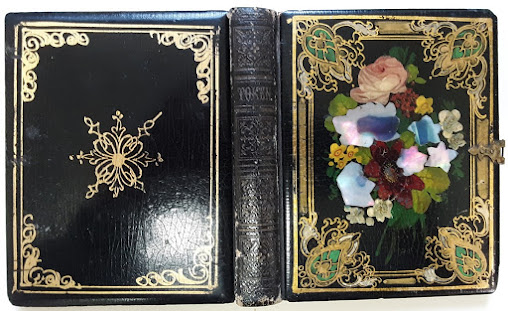I've told a couple of stories lately related to artifacts that arrived at the museum recently as part of a collection of mixed origin and vague provenance. This is another of those artifacts, the most colorful, but with a story behind it we'll most likely never be able to track down.
It's a case that probably would have housed originally an ambrotype, a type of photographic image on a glass plate introduced in the 1850s that superseded daguerreotypes. These one-of-a-kind images, both daguerreotypes and ambrotypes, were delicate and usually were sealed behind glass in cases of this sort.
Tintypes replaced ambrotypes during the 1860s and because they were far more stable did not require this type of protective casing.
What's happened here, it would appear, is that some time during the case's history it was prised open, the original ambrotype removed and a tintype inserted to replace it. A badly degraded ambrotype of two young men was found in the same box as this case, but it doesn't quite fill the case so it may or may not have been there originally.
As a result of the modifications, the primary interest here is the case itself --- more decorative than I usually see. Most cases, including this one, are wooden boxes but decorated with embossed papier-mache, a combination material or tooled leather.
This one is a very colorful mix of painted decoration enhanced by mother-of-pearl insets and embossed and colored leather. So more than likely we'll display it because of its decorative value rather than because of the anonymous tintype it contains.




1 comment:
That is so cool! I can't wait to be able to travel again and see that in person.
Post a Comment